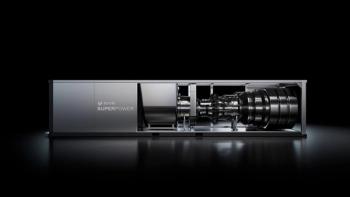
COMPRESSOR PERFORMANCE
DETERMINING THE PERFORMANCE OF CENTRIFUGAL COMPRESSORS IN OFF-DESIGN CONDITIONS
by Massimiliano Di Febo & Pasquale Paganini
Centrifugal compressors are widely used in upstream as well as middle-stream process plants. The ability to detect early indicators of eventual malfunction plays a crucial role in determining plant efficiency and profitability.
Traditional predictive maintenance techniques relate to the vibrational and structural dynamic aspects of rotor operation. But predictive strategies based on performance analysis help diagnosis machine status during operation.
For centrifugal pumps, for instance, machine models are being used to compare measured performance to design performance. The same process is more complex for centrifugal compressors due to the dependency of compressor performance upon the gas mix composition and inlet conditions (pressure and temperature). Therefore, a more complex model is required.
One of the primary difficulties in the performance analysis of centrifugal compressors arises from the need for a performance map adjusted to actual inlet conditions. One approach is to reduce the complexity of the problem by considering compressor head as invariable and applying simplified machine formulas. This works for low-pressure ranges and constant gas mixes.
However, error is introduced as soon as pressures rise or the gas mix changes. In these situations, it is necessary to adjust the design performance to operational conditions.
The starting point is the availability of a centrifugal compressor performance curve, the relevant gas mix composition and thermodynamic conditions (pressure and temperature). With these input data are available, expected compressor performance can be calculated.
The elements necessary to achieve this include: Reference and design compressor maps available from OEMs; reference input conditions and off-design input conditions. The Cmap software tool is used to analyze this data and produce an accurate performance model.
Take the case of a compressor operating with off-design inlet conditions. The model calculated at actual flow, the values of expected pressure, temperature, head and efficiency in the off-design conditions and compared them to the measured ones. This highlighted an error of about 9% for discharge pressure compared to its original design expectation. This approach is field tested to predict compressor performance. Different equations of state can be included in calculations based upon variations in the gas mix.
These results provide a useful analytical basis for compressor maintenance decisions. In most cases, deviations indicate the early stages of a problem. This proves especially useful for those centrifugal compressors that operate in high-pressure ranges, as well as under time-varying process conditions.
This method also opens the door to continuous monitoring of machine performance. Surge protection can be strengthened by automatic updates concerning actual inlet condition due to different inlet pressures and temperatures, as well as varying gas compositions.
Authors: is operation manager at IPC. IPC offers technical services and
technology solutions for machinery, system, plant devices such as turbo machinery and relevant, compressors, pumps and relevant monitoring, control and protection systems. Pasquale Paganini is technical manager at
IPC, which has developed the IPC SPS system powered by Cmap software. For more information, visit www.ipc-eng.com or www.compressormap.com
Newsletter
Power your knowledge with the latest in turbine technology, engineering advances, and energy solutions—subscribe to Turbomachinery International today.




